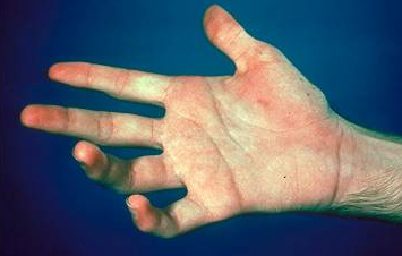The pituitary gland is a gland that resides in a depression in the skull at the base of the brain. It is a tiny, pea-sized gland that resides in a separate space beneath the brain called the sella turcica. An endocrine gland with an average weight of 0.5 grams is the pituitary. The hypophoseal fossa, dorsum sellae, and tuberculum sellae make up the sella turcica.
The structure that joins the brain's cerebrum to the spinal cord and cerebellum is known as the brainstem. It is divided into three sections, which are listed in descending order: the midbrain, pons, and medulla oblongata.
The sclera is the name for the eyeball's outermost layer. It is the strong, protective outer layer of the eyeball, covering four-fifths of the eyeball with dense fibrous tissue and serving as attachment points for the muscles that move the eye.
The middle ear, which is an air-filled, membrane-lined area positioned between the ear canal and the Eustachian tube, cochlea, and auditory nerve, is where the stapes bone is situated. The eardrum separates the middle ear from the ear canal.
The nasopharynx is the structure in the pharynx that has the adenoids. It is the pharynx, which is the top of your throat and where your nose meets your respiratory system. It has adenoids, which guard against infection.
Cowper's gland is another name for the bulbourethral gland. It is one of two pea-shaped glands in the male reproductive system that are situated near the start of the internal section of the penis, beneath the prostate gland. During ejaculation, the gland mixes fluids with semen.
Acetabulum refers to the cup-shaped depression on the hip joint where the head of the femur rests. Ilium, ischium, and pubis, the three parts of the hip bone, all contribute to its formation.
Advertisement
The heart's natural pacemaker is the sinoatrial node. Every single normal pulse is started by it, and since its activity is tightly regulated, the heart rate may adjust quickly to changes in physiological demand.
Increased cardiac output, rate, and metabolism are all effects of thyroid hormones. Thyroid hormone deficiency results in Bradycardia and poor output.
Hypovolemic shock may be indicated by increased respiratory and pulse rates.
Pyogenic osteomyelitis can develop as a result of an infection spreading via the blood. Staphylococcus aureus is the most frequent causative organism in children without a history of prior illness. The newborn period is when Haemophilus influenzae and Group B Streptococcus infections are most prevalent. Patients with sickle cell anemia are more likely to develop bone-related Salmonella infections.
The ICD-10-CM Official Rules, in "Section I. Conventions, general coding guidelines, and chapter-specific guidelines," suggest sequencing underlying diseases first, if relevant, followed by manifestation.

There is an injury to the ulnar nerve. One of the main nerves that supplies the upper extremities (the arms) is the ulnar nerve, which emerges from the brachial plexus and runs down the arm. Typical ulnar nerve palsy in a photograph. Take note of the hypothenar muscles losing away and the clawing of the ulnar two fingers.
There will be a "wrist drop" as a result of paralysis of the long forearm extensors. The hand's dorsal surface and the dorsal surfaces of the roots of the lateral three have a slight loss of sensation.
Advertisement
The long and index fingers often remain straight while the ring and little fingers flex when making a fist. The thumb opposition is frequently lost in low median nerve lesions, but the fingers can still move.
Osteosarcoma can be identified by the sarcoma's osteoid development. A young person's presentation and the tumor's metaphyseal placement in a long bone are consistent.